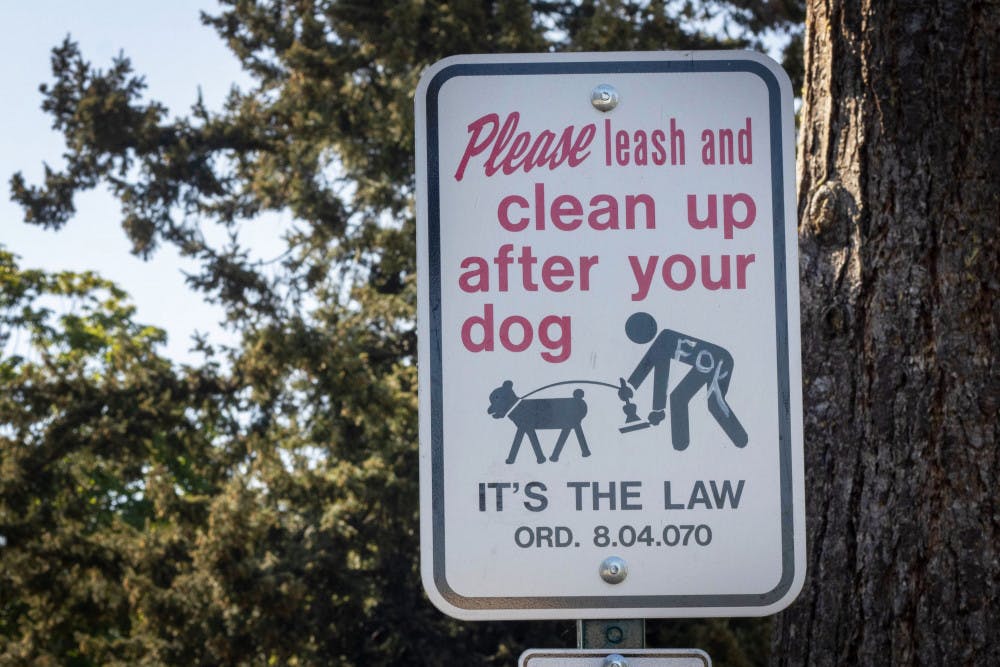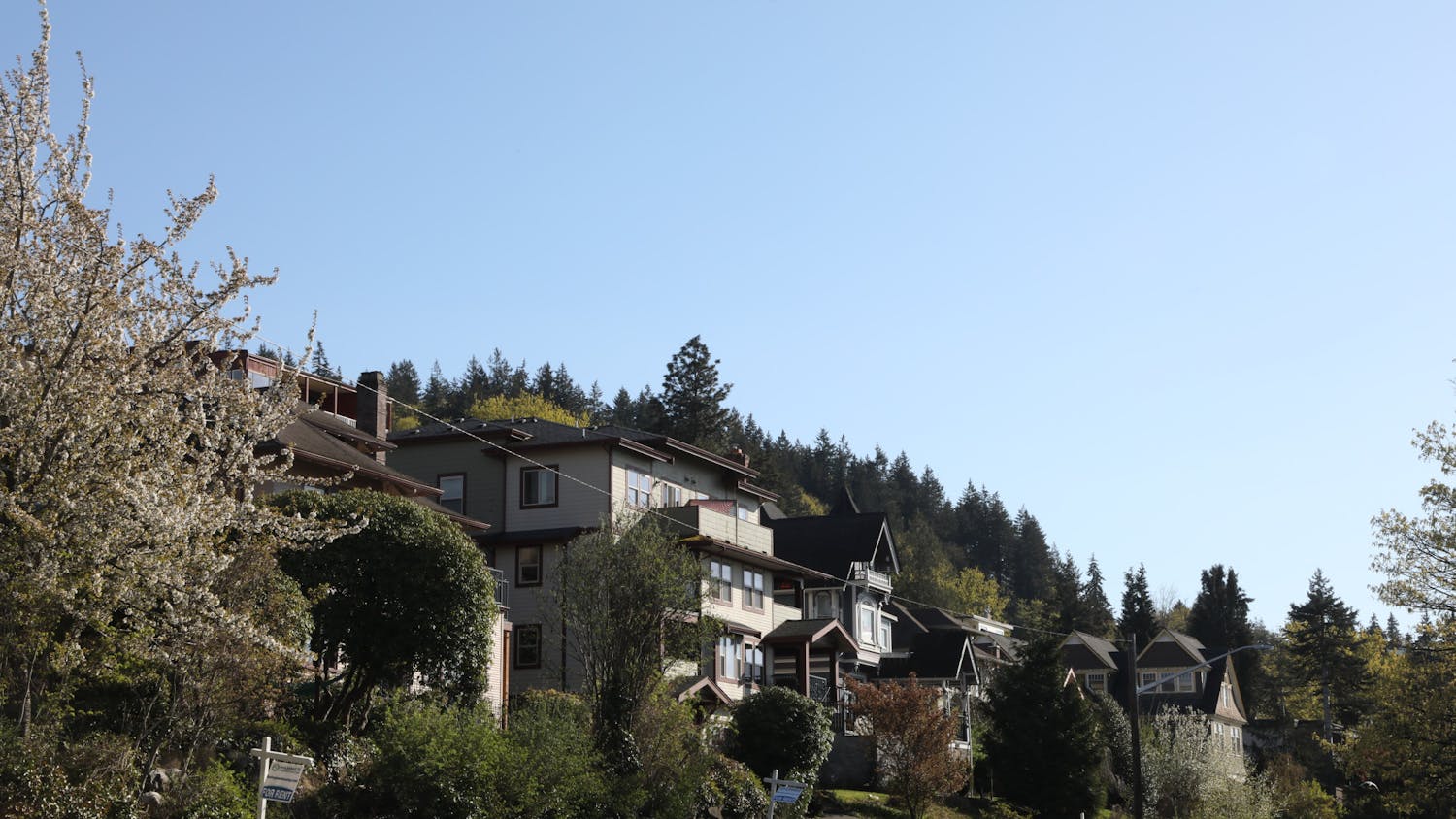In a city with nearly 20,000 dogs, unscooped pet waste is a major concern for multiple agencies

Scoop the poop.
It’s a simple phrase that most pet owners have probably heard. But recent local surveys show that people may not be as familiar with the right way to dispose of their pets’ waste and the impacts that waste can have on our ecosystem.
Bellingham is home to about 17,200 dogs who generate an estimated 30,450 pounds of waste each day according to the 2015 “We Scoop” final report.
The City of Bellingham found in a 2015 survey that 40% of Bellingham pet owners were confused about the best place to dispose of their pet’s waste. The same survey showed that only 33% of Bellingham pet owners were picking up their pet’s waste immediately or daily when at home.
Using this data, the public works department created the “We Scoop” campaign in 2015. The campaign “aims to reduce fecal coliform bacteria levels in Bellingham's urban creeks by encouraging regular collection and proper disposal of dog waste by dog owners at home,” according to the “We Scoop” final report.
Since its launch, 700 Bellingham residents have signed the “We Scoop” pledge according to Emily Hegarty, an environmental education and outreach specialist for Bellingham Public Works.
On April 14, the Whatcom Conservation District, which focuses on maintaining water quality and quantity in the county, has created a survey asking Whatcom County pet owners to identify their scooping habits.
The conservation district is concerned about improperly disposed of pet waste because of its negative impacts on water quality throughout the county. Improperly disposed pet waste can spread parasites and disease as well as impair local shellfish farms.
“What we’ll be able to do when we finalize this data is look at if people are having discernibly different behaviors when they’re in these different locations. And if there are differences with the demographics,” said Aneka Sweeney, the education and outreach coordinator for the Whatcom Conservation District.
The survey, which ran until May 6, garnered over 1,200 responses from Whatcom County residents.
“We’re really focused on the human behavior component that can help prevent [pet waste] pollution,” Sweeney said.
Pet waste runoff enters the water as fecal coliform and travels through streams and rivers until it eventually reaches the bay.
“If that waste isn’t managed correctly, it ends up in our waterways and into our shellfish beds,” Sweeney said.
When levels of fecal coliform become too high, shellfish farms along the bay are forced to close for days at a time, said Bill Dewey, the director of public affairs for Taylor Shellfish.
These closures have become an annual event, according to Dewey. When the heavy rains begin in late fall and early winter, they flush out all the waste that remained stagnant in the summer and bring it into the bay.
Sweeney explained that shellfish that have absorbed fecal coliform and are then eaten can cause norovirus or gastrointestinal distress in people.
“It presents a public health risk because the animals we raise are filter feeders. So, if there are pathogens in the water, they’re going to pick it up and become unsafe to eat,” Dewey said.
Fecal coliform has become such a serious contaminant, that in 2011 about 4,000 acres of Samish Bay was downgraded from approved to conditionally approved by the Washington State Department of Health.
The downgrade means that when the bay reaches a certain threshold of fecal coliform it must be closed until the levels decrease. The health department estimated that Samish Bay will have to be closed to shellfish farming for 30-70 days per year because of unsafe levels of fecal coliform.
Unattended pet waste can also contribute to the spread of pathogens among humans and animals.
Even if waste is left far away from a water source, “It’s very likely that rainwater will pick up pathogens that are in pet waste and carry that off someone’s property into ditches or drains which then connect to larger bodies of water,” Hegarty said.
Parasite-infected pets can also spread disease through their waste. Roundworms, which transmit their eggs through animal waste, can survive in the soil for months or years according to the Centers for Disease Control.
Those parasites can then be consumed by other animals or picked up by people long after the visible waste has washed away.
The “We Scoop” campaign found that many Bellingham pet owners were at least somewhat aware of this problem. In 2015, 14% of those surveyed had read “a lot” about pet waste bacteria or parasites being able to survive for days, weeks or months, and 53% had read “some” about the topic.
Derrick Taff, a contributor to the report “Dog Guardians’ Perceptions and Behaviors Related to the Disposal of Pet Waste in City of Boulder Open Space and Mountain Parks Findings” and a professor at Penn State University, noted that human behavior plays a large role when it comes to pet waste issues.
“If it’s not an easy behavior for people to do, then they’re less likely to do it. It’s common sense,” Taff said.
He recommended that cities consider convenience as a major factor when trying to encourage responsible disposal of pet waste. Taff said that installing more poop bag stations and encouraging on-leash areas are two of the key factors in decreasing excessive pet waste in public areas.
To minimize the impacts of pet waste on fecal coliform levels, Hegarty recommended that pet owners scoop and bag pet waste, even when at home, ensure that it’s disposed of in the trash and take the “We Scoop” pledge.
Sweeney noted that while pet waste is a “tiny component” when it comes to protecting water quality it’s also “one piece of a larger puzzle that we, as Whatcom County citizens, can manage.”





